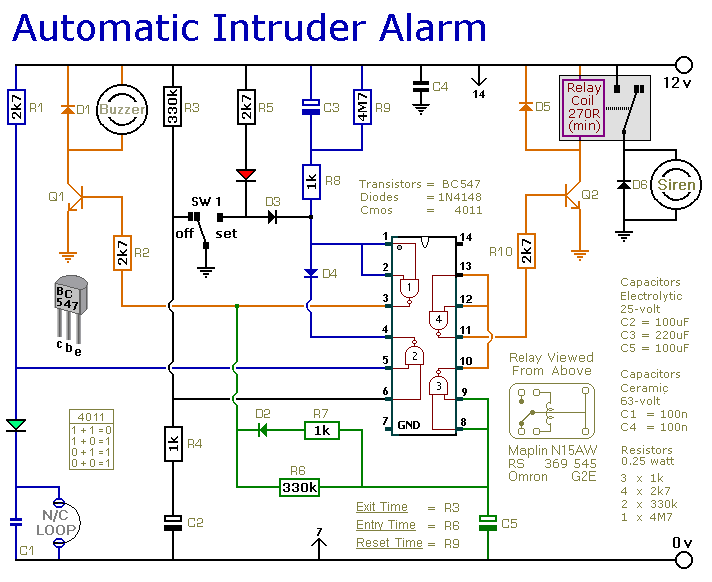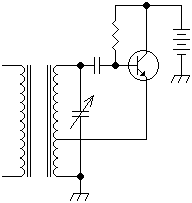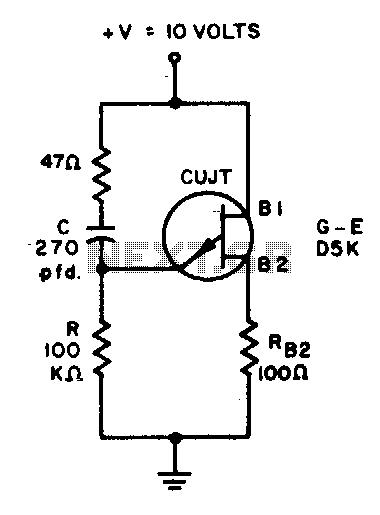
oscillator circuit

Here is a small LM386-based square-wave oscillator constructed from the following schematic. A 50k potentiometer was used in place of a 30k resistor, which functions as a pitch controller. The audio provided consists of track recordings made in Ableton 8.0, featuring a filter on one track and some reverb for the air-raid siren sound effect.
The LM386 is a low voltage audio amplifier, commonly used in battery-powered devices. In this application, it functions as a square-wave oscillator, generating audio signals that can be manipulated for various sound effects. The circuit typically includes a few key components: the LM386 chip, resistors, capacitors, and a potentiometer.
The square-wave oscillator operates by charging and discharging capacitors, which creates a periodic waveform. The frequency of the oscillation is determined by the values of the components in the circuit. By replacing the fixed 30k resistor with a 50k potentiometer, the user can adjust the resistance and consequently the frequency of the generated square wave, allowing for real-time pitch modulation during performance or recording.
In the schematic, the LM386 is connected to a power supply, typically in the range of 5 to 12 volts, with bypass capacitors to stabilize the power supply and filter out noise. The output of the LM386 can be connected to a speaker or an audio interface for further processing. The audio recordings mentioned were created using Ableton 8.0, where additional effects such as filtering and reverb were applied to enhance the sound quality and create a more immersive listening experience.
This configuration not only demonstrates the versatility of the LM386 in generating audio signals but also highlights the importance of component selection in shaping the sound. The use of a potentiometer adds an interactive element, making it suitable for live performances or experimental audio projects.Here`s a small LM386-based square-wave oscillator built from the following schematic. I replaced the 30k resistor with a 50k Potentiometer from my stash of parts which then, of course, acts as a pitch controller. The following audio is some track recordings made in Ableton 8. 0 with a little filter on one track and some reverb the air-raid siren so unding noise. Audio clip: Adobe Flash Player (version 9 or above) is required to play this audio clip. Download the latest version here. You also need to have JavaScript enabled in your browser. 🔗 External reference
The LM386 is a low voltage audio amplifier, commonly used in battery-powered devices. In this application, it functions as a square-wave oscillator, generating audio signals that can be manipulated for various sound effects. The circuit typically includes a few key components: the LM386 chip, resistors, capacitors, and a potentiometer.
The square-wave oscillator operates by charging and discharging capacitors, which creates a periodic waveform. The frequency of the oscillation is determined by the values of the components in the circuit. By replacing the fixed 30k resistor with a 50k potentiometer, the user can adjust the resistance and consequently the frequency of the generated square wave, allowing for real-time pitch modulation during performance or recording.
In the schematic, the LM386 is connected to a power supply, typically in the range of 5 to 12 volts, with bypass capacitors to stabilize the power supply and filter out noise. The output of the LM386 can be connected to a speaker or an audio interface for further processing. The audio recordings mentioned were created using Ableton 8.0, where additional effects such as filtering and reverb were applied to enhance the sound quality and create a more immersive listening experience.
This configuration not only demonstrates the versatility of the LM386 in generating audio signals but also highlights the importance of component selection in shaping the sound. The use of a potentiometer adds an interactive element, making it suitable for live performances or experimental audio projects.Here`s a small LM386-based square-wave oscillator built from the following schematic. I replaced the 30k resistor with a 50k Potentiometer from my stash of parts which then, of course, acts as a pitch controller. The following audio is some track recordings made in Ableton 8. 0 with a little filter on one track and some reverb the air-raid siren so unding noise. Audio clip: Adobe Flash Player (version 9 or above) is required to play this audio clip. Download the latest version here. You also need to have JavaScript enabled in your browser. 🔗 External reference





